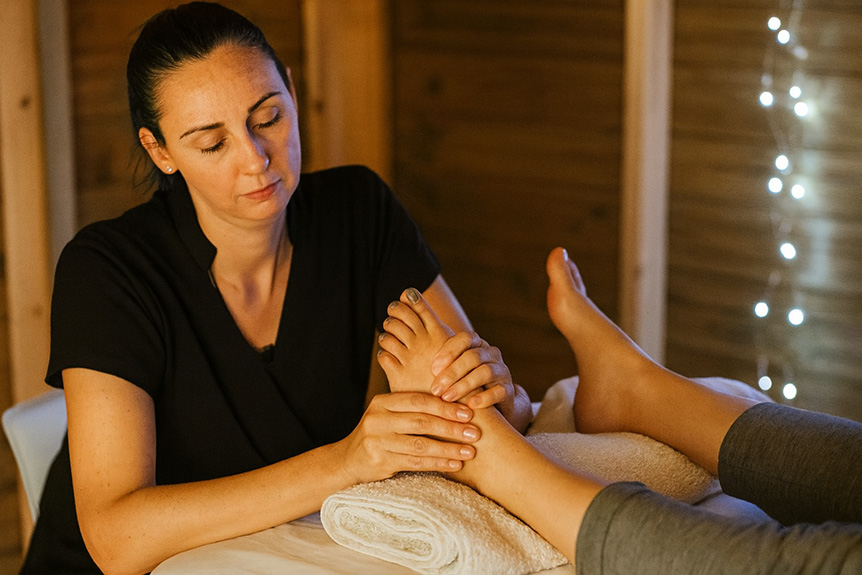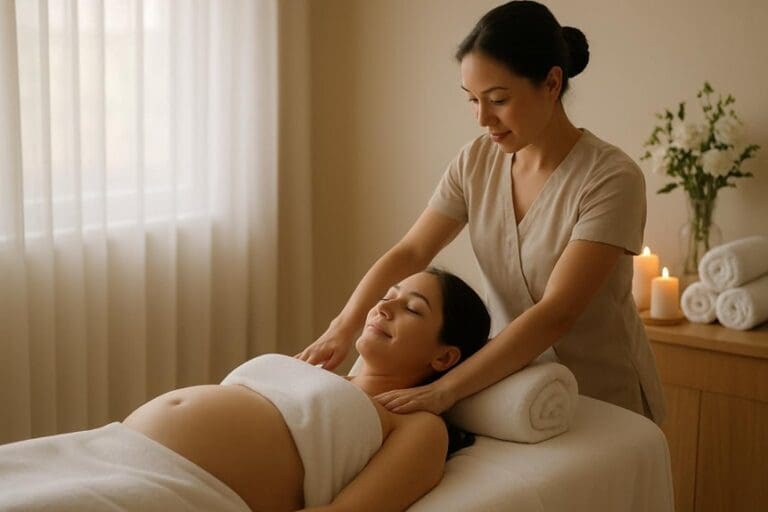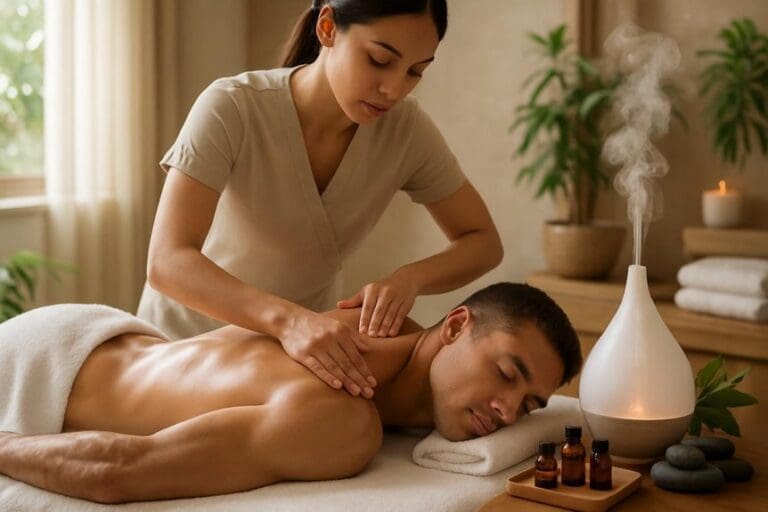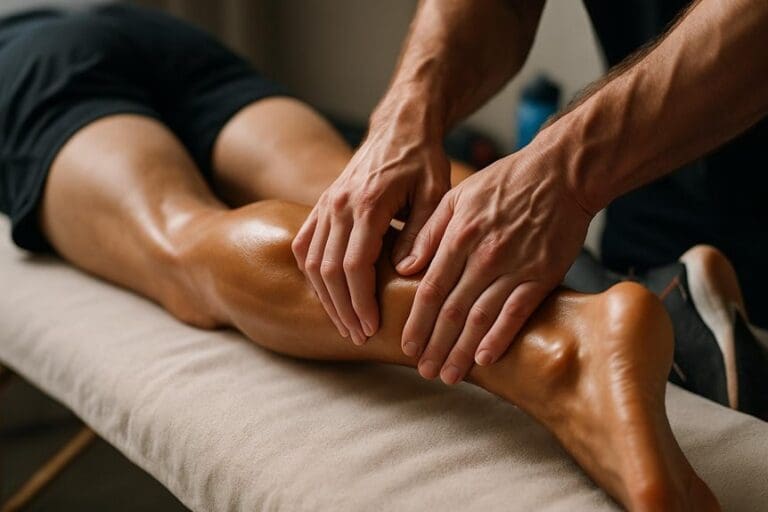This is a complementary therapy involving targeted pressure on specific areas of the feet, hands, or ears, based on traditional concepts linking these points to broader body systems. While widely practiced for relaxation and perceived stress reduction, scientific studies offer limited and inconclusive support for its broader health claims. Objective benefits remain unproven, and reported effects are mainly subjective. For those interested in what it may offer, additional information explores its practice, potential benefits, and client experiences.
Understanding Reflexology: What It Is and How It Works
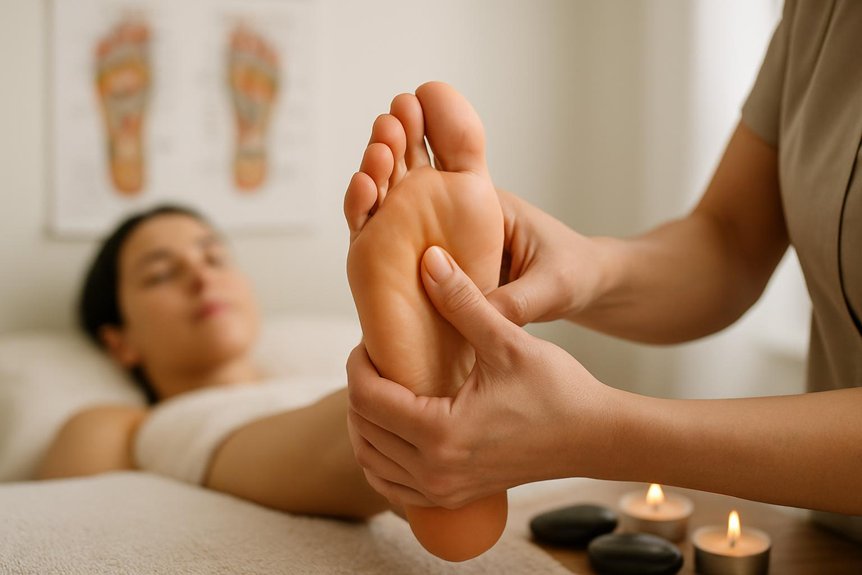
How does this fit within established therapeutic practices? Reflexology is a complementary therapy involving manual pressure applied to specific points on the feet, hands, or ears, thought to correspond to organs and systems throughout the body.
Practitioners at Spa & Massage deliver targeted sessions using targeted techniques intended to promote relaxation and perceived wellbeing.
It does not replace medical intervention, but may be integrated with other wellness approaches, such as massage therapy, to support holistic care.
While many clients report subjective improvements in stress and tension, the physiological mechanisms remain uncertain.
The practice is generally considered safe for most individuals when performed by trained professionals.
At Spa & Massage, therapists prioritise a client-focused approach, ensuring comfort and tailoring each session to individual needs and preferences.
Many people seek out this treatment to experience the healing power of this gentle, holistic practice and to complement their overall wellness routine.
The Science and Evidence Behind
While it is widely practiced and appreciated by many clients for its relaxing effects, the scientific community continues to evaluate its clinical efficacy. Existing research on this treatment presents mixed results; some small studies suggest potential benefits for stress reduction and subjective well-being, but evidence for specific therapeutic outcomes remains inconclusive. Large-scale, rigorously controlled trials are limited, and many studies acknowledge methodological constraints, such as small sample sizes or lack of blinding.
At Spa & Massage, therapists recognise the importance of evidence-based practice and stay informed about current research. It remains a complementary approach, and clients are encouraged to contemplate it as part of a broader wellness plan.
While its mechanisms are not fully understood, the tactile care and focused attention can offer a valued sense of comfort.
Common Benefits Experienced by Clients
Many clients report a range of positive experiences following massage sessions, most remarkably a sense of deep relaxation and reduced perceived stress.
Anecdotal accounts frequently mention an improved ability to unwind, temporary relief from tension, and increased feelings of overall wellbeing.
Some individuals describe improvements in sleep quality and a subtle enhancement in mood.
Others observe reductions in minor aches or discomfort, particularly in the feet and lower limbs.
However, while these claims are consistently reported, robust clinical evidence remains limited and largely subjective.
Current research does not confirm this treatment as a definitive treatment for specific medical conditions.
In clinical practice at Spa & Massage, therapists observe that perceived benefits are highly individualized and may be influenced by the calming environment and attentive, supportive care provided during each session.
Our Approach to Zone Therapy at Spa & Massage
In clinical settings such as Spa & Massage, zone therapy is approached as a non-invasive complementary therapy focused on supporting relaxation and subjective wellbeing, rather than as a definitive treatment for medical conditions.
The therapists at Spa & Massage employ techniques grounded in this traditional concepts while maintaining a clear distinction between promoting comfort and making unsupported health claims.
Each session is customised, with therapists prioritising the client’s comfort, preferences, and any relevant health considerations.
The team recognises current evidence highlighting relaxation and temporary relief of tension, but avoids overstating benefits or suggesting diagnostic value.
This therapy at Spa & Massage is always integrated thoughtfully within a holistic wellness framework, with transparency about its limitations.
Clients are encouraged to view this therapy as part of a broader self-care regimen.
What to Expect During and After a Session
Although zone therapy is widely practiced as a complementary therapy, current scientific evidence supports its primary benefits as promoting relaxation and temporary relief of tension rather than treating medical conditions.
During a session at Spa & Massage, clients can expect to recline in a tranquil environment while a trained therapist applies gentle, targeted pressure to specific points on the feet, hands, or ears. Sessions typically last 30 to 60 minutes, with therapists adjusting techniques to individual comfort and sensitivity.
Most clients report sensations of warmth or mild tingling, and a general feeling of calm. After a session, transient effects such as lightness, relaxation, or slight fatigue are common.
Our therapists recommend rest and hydration post-session to support the body’s natural relaxation response.
Conclusion
Much like a compass guiding travelers through uncharted waters, this may offer direction in the pursuit of relaxation and well-being, yet the map remains partially uncharted. While some evidence suggests potential benefits, clinical consensus is cautious, emphasizing the need for further robust research. For those steering wellness journeys, this therapy can be considered a complementary tool—one best employed alongside proven therapies, and with a discerning eye on both its possibilities and its current scientific limitations.
